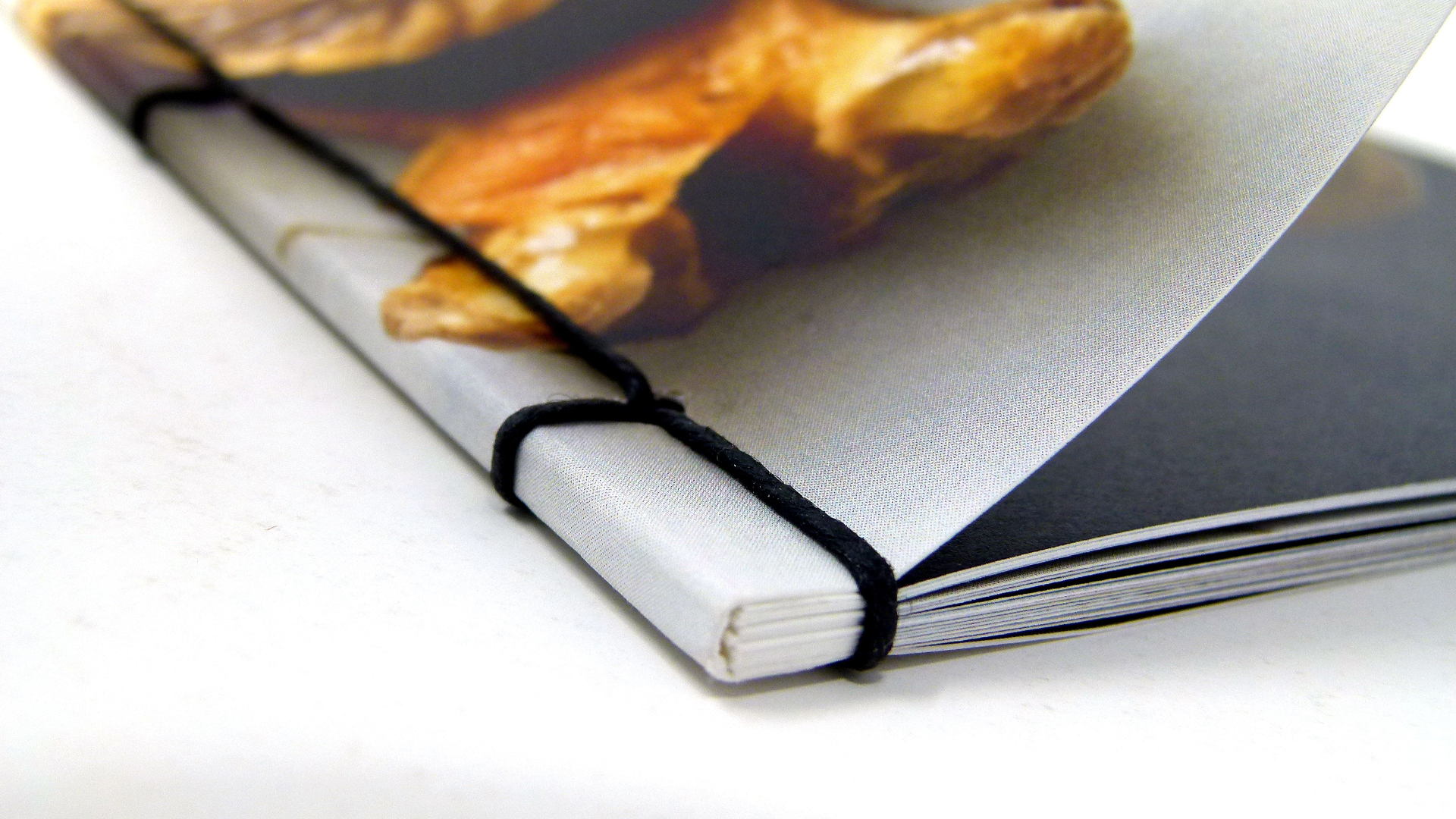Japanese stab binding is probably the most well-known form of hand-sewn binding. It exudes luxury and preciousness in the very best sense of the words.
Japanese stab binding refers to a sewing technique that has been used in recent centuries by Japanese, Korean and Chinese bookbinders.
How it is done
The pages and covers of a book are gathered, then four to six holes are drilled about 1 centimeter from the spine, and the book is stitched together with a heavy thread or cord.
Instead of binding the book through the folds of the signatures though, like we would with saddle stitching, the stitches run along the side of the booklet and wrap across the spine.
The stitch can be a simple Stab stitch or more intricate variations like Tortoise Shell and Hemp Leaf. The obvious advantage here is that you can include loose sheets in the text block.
The disadvantage: 1 centimeter can be a substantial margin to lose on a page. Plus, anything that’s bound on the side will mousetrap – the book will try to close again instantly – and the thicker the book, the more it will mousetrap.
« Back to Glossary Index




